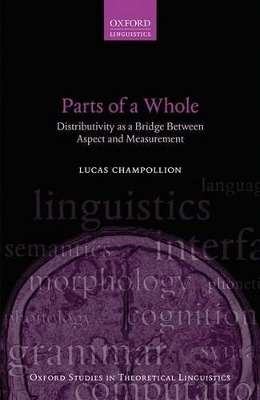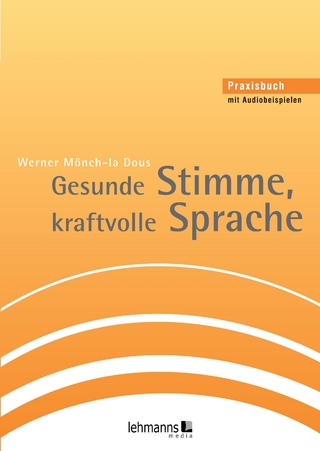
Parts of a Whole
Distributivity as a Bridge between Aspect and Measurement
Seiten
2017
Oxford University Press (Verlag)
978-0-19-875513-5 (ISBN)
Oxford University Press (Verlag)
978-0-19-875513-5 (ISBN)
This book uses mathematical models of language to explain why there are certain gaps in language: things that we might expect to be able to say but can't. Lucas Champollion offers a theory that unifies the concepts of aspect, plural and mass reference, measurement, and distributivity, to account for these gaps.
This book uses mathematical models of language to explain why there are certain gaps in language: things that we might expect to be able to say but can't. For instance, why can we say I ran for five minutes but not *I ran all the way to the store for five minutes? Why is five pounds of books acceptable, but *five pounds of book not acceptable? What prevents us from saying *sixty degrees of water to express the temperature of the water in a swimming pool when sixty inches of water can express its depth? And why can we not say *all the ants in my kitchen are numerous? The constraints on these constructions involve concepts that are generally studied separately: aspect, plural and mass reference, measurement, and distributivity. In this book, Lucas Champollion provides a unified perspective on these domains, connects them formally within the framework of algebraic semantics and mereology, and uses this connection to transfer insights across unrelated bodies of literature and formulate a single constraint that explains each of the judgments above.
This book uses mathematical models of language to explain why there are certain gaps in language: things that we might expect to be able to say but can't. For instance, why can we say I ran for five minutes but not *I ran all the way to the store for five minutes? Why is five pounds of books acceptable, but *five pounds of book not acceptable? What prevents us from saying *sixty degrees of water to express the temperature of the water in a swimming pool when sixty inches of water can express its depth? And why can we not say *all the ants in my kitchen are numerous? The constraints on these constructions involve concepts that are generally studied separately: aspect, plural and mass reference, measurement, and distributivity. In this book, Lucas Champollion provides a unified perspective on these domains, connects them formally within the framework of algebraic semantics and mereology, and uses this connection to transfer insights across unrelated bodies of literature and formulate a single constraint that explains each of the judgments above.
Lucas Champollion is Assistant Professor of Linguistics at New York University. He holds a Ph.D. in Linguistics (2010) and a M.Sc. in Computer and Information Science (2007), both from the University of Pennsylvania. Before joining New York University in 2012, he worked as a postdoctoral researcher at the Eberhard Karls Universität Tübingen in Germany. His work has appeared in journals such as Theoretical Linguistics, Linguistics and Philosophy, Journal of Semantics and Semantics and Pragmatics.
1: Overview
2: The stage
3: The cast of characters
4: The theory
5: Minimal parts
6: Aspect and space
7: Measure functions
8: Covert distributivity
9: Overt distributivity
10: Collectivity and cumulativity
11: Conclusion
| Erscheinungsdatum | 24.03.2017 |
|---|---|
| Reihe/Serie | Oxford Studies in Theoretical Linguistics ; 66 |
| Verlagsort | Oxford |
| Sprache | englisch |
| Maße | 155 x 234 mm |
| Gewicht | 486 g |
| Themenwelt | Geisteswissenschaften ► Sprach- / Literaturwissenschaft ► Sprachwissenschaft |
| ISBN-10 | 0-19-875513-9 / 0198755139 |
| ISBN-13 | 978-0-19-875513-5 / 9780198755135 |
| Zustand | Neuware |
| Haben Sie eine Frage zum Produkt? |
Mehr entdecken
aus dem Bereich
aus dem Bereich
Das umfassende Standardwerk auf der Grundlage der aktuellen amtlichen …
Buch | Hardcover (2024)
Duden (Cornelsen Verlag)
35,00 €


